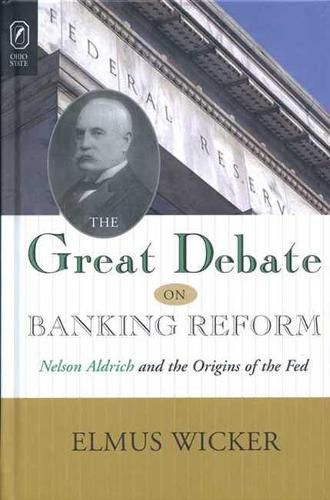Readings Newsletter
Become a Readings Member to make your shopping experience even easier.
Sign in or sign up for free!
You’re not far away from qualifying for FREE standard shipping within Australia
You’ve qualified for FREE standard shipping within Australia
The cart is loading…






This title is printed to order. This book may have been self-published. If so, we cannot guarantee the quality of the content. In the main most books will have gone through the editing process however some may not. We therefore suggest that you be aware of this before ordering this book. If in doubt check either the author or publisher’s details as we are unable to accept any returns unless they are faulty. Please contact us if you have any questions.
Eminent historian of economics Elmus Wicker examines the events which spurred a series of banking panics beginning in 1893-94, that led to the creation of the U.S. Federal Reserve Bank twenty years later. A serious lacuna exists in the literature on the origins of the Federal Reserve System. What is absent is a fair appraisal of the role Senator Nelson Aldrich, prominent Rhode Island senator, played. Carter Glass captured the acclaim while asserting that Aldrich be granted equal billing with Glass as fathers of the Federal Reserve System.That claim is based on the fact that Aldrich removed three formidable obstacles that lay in the path to the establishment of a U.S. central bank. He can be credited with overcoming the shibboleth against a central bank which has its own origins in the nineteenth-century Jackson-Biddle feud over the renewal of the Charter of the Second Bank of the United States. In a single stroke he removed asset-based currency proposals from the banking reform agenda and substituted a central bank. Aldrich provided the necessary congressional leadership that was notoriously absent before 1908. He drafted the Aldrich bill which called for a central bank many of whose provisions appear in the Federal Reserve Act. Wicker paints a detailed picture of the history of this now-essential structure in the U.S. economy.
$9.00 standard shipping within Australia
FREE standard shipping within Australia for orders over $100.00
Express & International shipping calculated at checkout
This title is printed to order. This book may have been self-published. If so, we cannot guarantee the quality of the content. In the main most books will have gone through the editing process however some may not. We therefore suggest that you be aware of this before ordering this book. If in doubt check either the author or publisher’s details as we are unable to accept any returns unless they are faulty. Please contact us if you have any questions.
Eminent historian of economics Elmus Wicker examines the events which spurred a series of banking panics beginning in 1893-94, that led to the creation of the U.S. Federal Reserve Bank twenty years later. A serious lacuna exists in the literature on the origins of the Federal Reserve System. What is absent is a fair appraisal of the role Senator Nelson Aldrich, prominent Rhode Island senator, played. Carter Glass captured the acclaim while asserting that Aldrich be granted equal billing with Glass as fathers of the Federal Reserve System.That claim is based on the fact that Aldrich removed three formidable obstacles that lay in the path to the establishment of a U.S. central bank. He can be credited with overcoming the shibboleth against a central bank which has its own origins in the nineteenth-century Jackson-Biddle feud over the renewal of the Charter of the Second Bank of the United States. In a single stroke he removed asset-based currency proposals from the banking reform agenda and substituted a central bank. Aldrich provided the necessary congressional leadership that was notoriously absent before 1908. He drafted the Aldrich bill which called for a central bank many of whose provisions appear in the Federal Reserve Act. Wicker paints a detailed picture of the history of this now-essential structure in the U.S. economy.